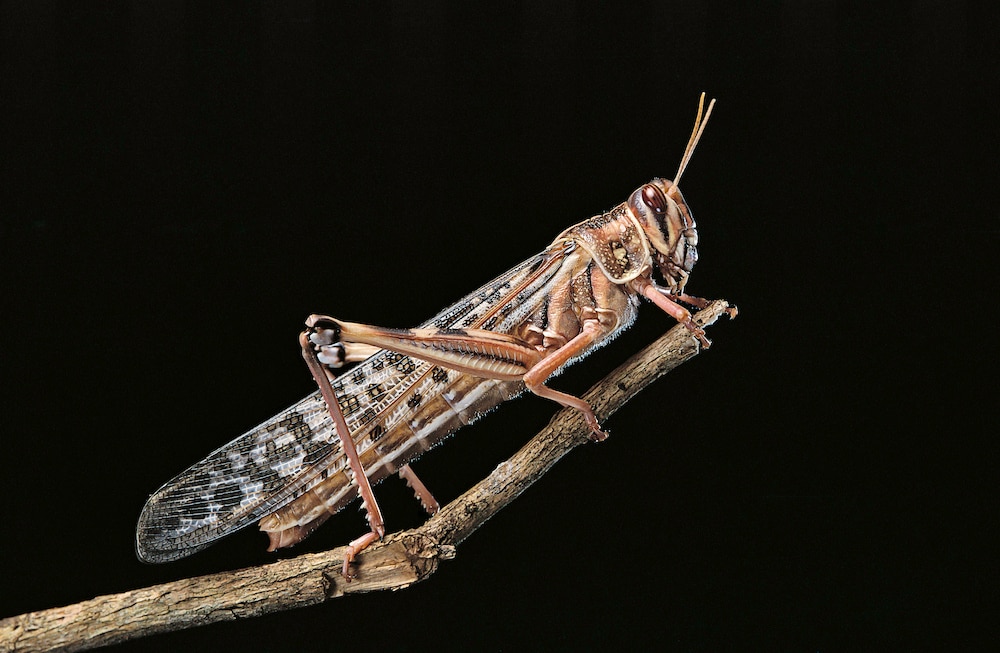Create a free profile to get unlimited access to exclusive videos, sweepstakes, and more!
Cyborg locusts can detect cancer by smelling your breath
They know more about you than you know about yourself.

Mary Shelley’s Frankenstein is oft credited for sparking science fiction as a genre, and for good reason. The titular Dr. Frankenstein pushes the boundaries of science by combining biology with technology and, while the response to his creation was less than ideal, the story has inspired several movie adaptations and continues to inspire scientific inquiry to this day.
Science has spent centuries endeavoring to create technologies which mimic or even improve on the natural senses. In some areas, we have succeeded. Microscopes and telescopes grant us enhanced vision, allowing us to see into parts of reality which would otherwise be shielded from us. Likewise, microphones and radio telescopes let us hear things our bodies are incapable of sensing, from distant cosmic objects to the vibrations of a single bacterium. Despite our successes at improving upon those senses, we haven’t been quite as successful when it comes to the sense of smell. For the time being, nature is still the reigning champ.
It's with that in mind that scientists from the Department of Biomedical Engineering and the Institute of Quantitative Health Science and Engineering at Michigan State University designed a system which exploits the olfactory abilities of locusts to sniff out cancers. Their findings have been presented on the pre-print server BioRxiv.
It might not seem like it when you’re caught in a particularly smelly situation, but humans have a comparatively poor sense of smell. Many non-human animals have incredibly powerful noses, which is why dogs are so often used to sniff out drugs or explosives and even some diseases. Now, we’ve learned that locusts are similarly talented.
In an effort to build something resembling the functionality of Professor Farnsworth’s Smelloscope from Futurama, researchers are leaning on the olfactory processing power of locusts to do the heavy lifting. Sniffing out cancers, or anything really, hinges on the fact that they create volatile chemical compounds which can be detected by a nose. In terms of disease, cancerous cells have different chemical signatures than healthy ones and those compounds eventually make their way to the lungs and exit the body in our breath. Humans don’t have the necessary biological hardware to differentiate those different volatiles, but many non-human animals do.
Locusts were chosen because of their long history in scientific research. Scientists already have a good foundation of how olfaction works in locusts as well as the related neural circuits. Although, future experiments might utilize honeybees because of their impressive sensory abilities.
The researchers suspected the locusts were able to smell cancerous volatiles, but they needed a way to get the information in their brains into something we could utilize. To do that, they connected an electrode antenna into the locust brain and ran their neuronal activity through a computer to create chemical profiles of healthy and diseased cells.
This half animal, half machine detector was then provided with cells from three different types of oral cancers and their brain activity was measured while they were smelling them. Researchers were pleased to confirm that locusts can, in fact, distinguish between healthy and cancerous cells and that data could be read out from their brain activity. What’s more, the locusts were able to distinguish between the three different types of cancers. That means that a system based off of their olfactory abilities could sense not only whether or not a patient has cancer, but also which type.
Perhaps even more impressive is the speed with which the system made a positive confirmation. All told, detection takes only about a quarter of a second. Scientists also believe this system, or one modeled after it, could detect almost all types of cancers, contingent only on whether or not they produce volatile compounds which can be detected from the breath.
It’s unlikely, however, that you’ll find a cyborg locust in a lab coat at your doctor’s office anytime soon. Utilizing these types of detectors is probably still many years away, and when it does finally get to clinical applications, the locust will have been removed. The goal is to build a sensor which uses the biological ability of locusts and other animals. That’s good news. We definitely want the ability to detect disease quickly and accurately, but building technological monsters rarely ends well. Just ask Dr. Frankenstein.


























